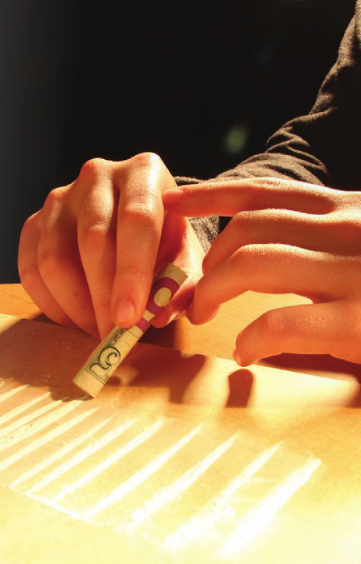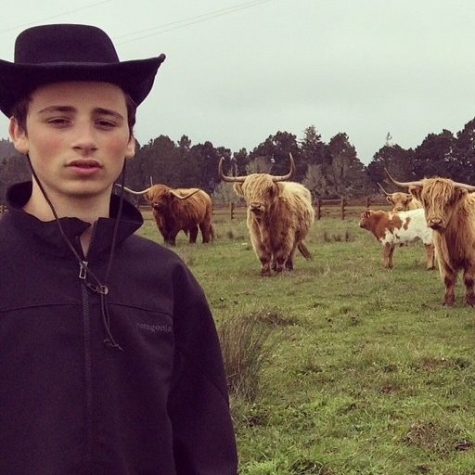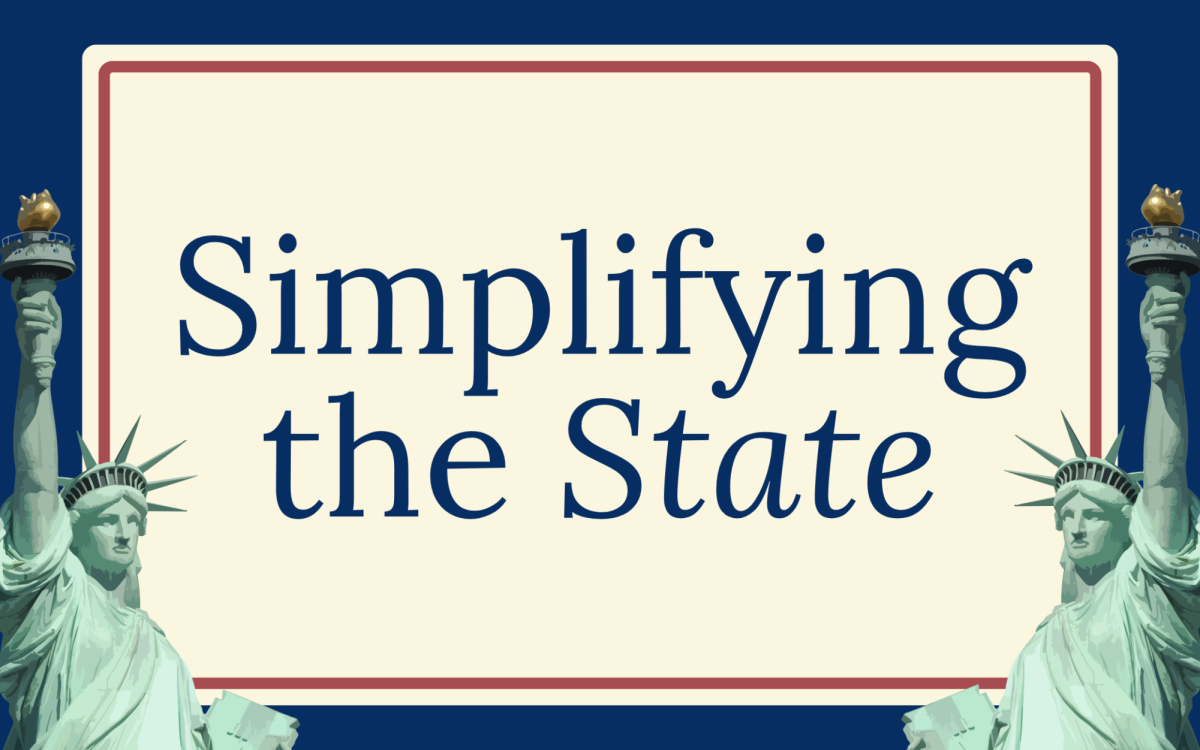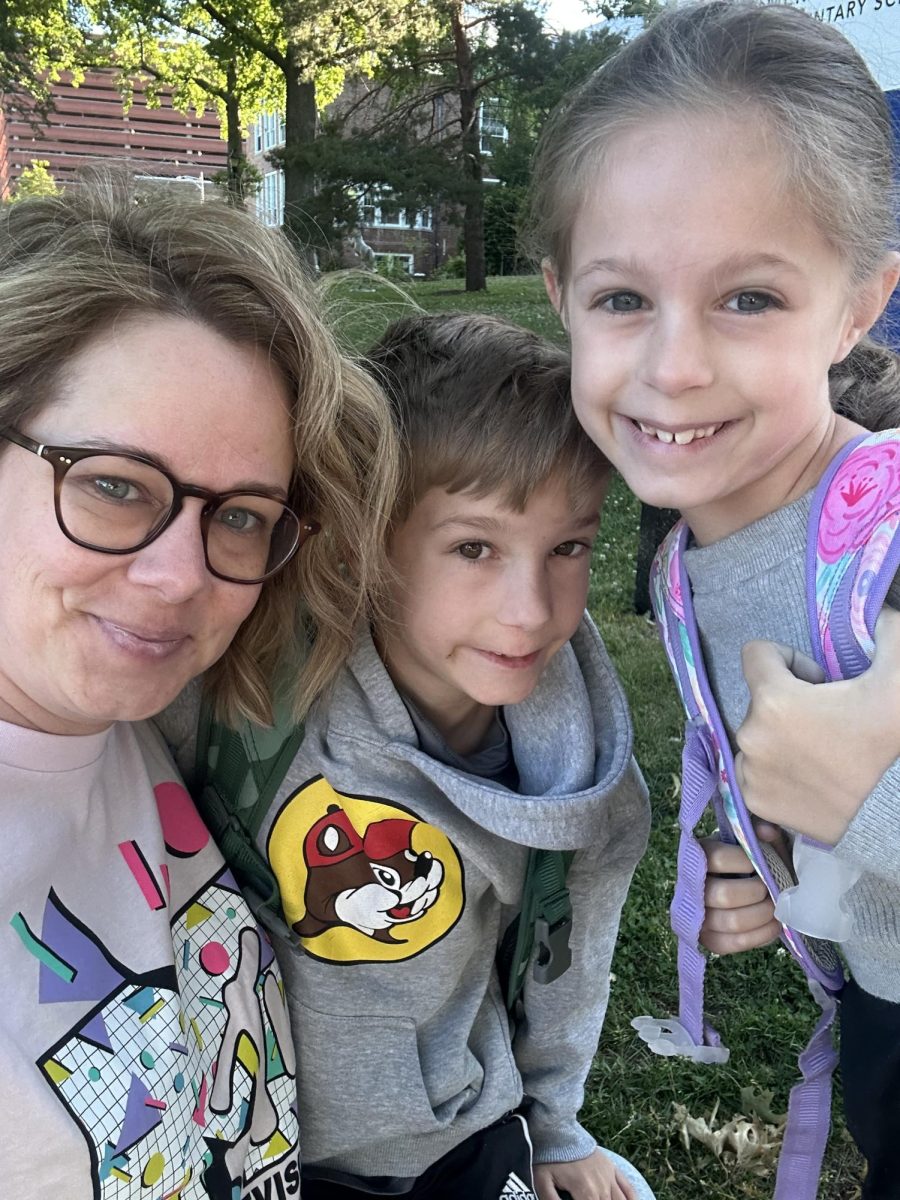Cocaine at Clayton

Cocaine is becoming increasingly prevalent among the CHS student body (Noah Engel).
March 5, 2015
One time, somebody was like ‘Hey, come to the bathroom with me’ … and she started doing cocaine,” junior Mary* said. “She had it in an old prescription drug container, and she poured it out on the table, and she took the credit card and did the whole slicing thing…[T]hen she took a dollar bill, rolled it up and snorted.”
Clayton students are no strangers to drugs, but recently, the use of harder drugs, specifically cocaine, has been on the rise. Cocaine is a powerfully addictive drug that stimulates the body, producing a dopamine rush and heightened energy. In addition, cocaine can dangerously raise heart rate and blood pressure, putting users at risk of a heart attack and brain damage, among other consequences that result from habitual use.
“You can’t build up any sort of tolerance for cocaine. The more you use, the higher the risks.” Marc Diamond, Neurotherapeutic at UT Southwestern, said. “And, in contrast to marijuana, or alcohol, or heroin, cocaine is a stimulant, so it makes people more active, more sexually active, more hopped up. It lets people party longer and it gives people more of an instant rush.”
Jessica,* a junior at CHS, first tried cocaine during the summer before her junior year. “A couple weeks before that I kind of wanted to try it and my friend wanted to, too. Then someone said they would give us a line for free, so we were kind of like, okay why not, let’s just try it.”
Since then, Jessica has used cocaine several times and has yet to experience any major consequences as a result of her use. “I was always kind of scared of cocaine,” she said. “That changed when my friends who I was hanging out with on the weekends started to do it. It kind of became a normal thing and then it didn’t seem as bad.”
For Mark,* CHS senior, his fear of cocaine did not fade with his increased familiarity with it. “I thought I would never do it. I thought it was a dirty drug that was pretty dangerous,” he said. “I was really hesitant to do it, and when I did it I didn’t like the way it made me feel.”
According to CHS psychology teacher David Aiello, cocaine first became popular among affluent suburban teenagers and adults in the 1980’s. Users would take cocaine to help them socialize at parties or get their work done quickly, and the high that cocaine provoked would not be so intense as to inhibit functionality.
“Then they would crash, but since the high wasn’t so terribly high, the crash wasn’t so terribly low, either,” Aiello said. “The problem was, they got really used to feeling that high whenever they didn’t feel good, and so they would become addicted to it.”
Katherine* is a junior at CHS who does not support the use of cocaine, but has many friends who use the drug regularly. “When they’re high, they’re twitchy and really alert. They just have to keep doing stuff,” she said. “They’ll do one task for a certain amount of time, then they’ll get up and do something else. It’s crazy. It doesn’t make any sense.”
Mark has experienced that effect firsthand. “I felt jittery and kind of sweaty, and it was just not comfortable. I felt like I needed to go do something,” he said. “It feels kind of like an ADHD medication times ten.”
Despite the dangerous reputation of cocaine, some CHS students do not fear addiction. “I don’t get addicted to things really, like I can say no and I know when to stop,” Jessica said. “So if you aren’t that type of person … if you just want to try it once, I feel like everyone will go through that at some point.”
But in contrast, brain research has shown that addiction is a frightening possibility, even for casual users. “Cocaine really goes right to the heart of your addiction centers, and so it’s one of the most addicting drugs you can take. “It’s a difficult drug, because as soon as you get it, you really want more of it,” Diamond said.
“Once you do it, you really want to do it again,” Mark said. “If you do it once that day, in a couple of hours you are definitely going to have a craving for more, which is really bad because that is a sign of immediate addiction.”
The consequences of using cocaine extend beyond addiction. “The first time you use, it can cause a dangerous reaction,” Aiello said. “Maybe there is a minor heart problem that you’ve never had diagnosed and the drug exacerbates that, so even the first time can end up in very dramatic results.”
“Cocaine causes the blood vessels in your brain to narrow and constrict, and that can cause strokes and heart attacks,” Diamond said. Cocaine makes your blood pressure really high, and people can have bleeding in the brain induced by [cocaine.]
In recent years, more teenagers have been exposed to cocaine and other drugs through the media, which often omits the dangerous effects of such substances. “I think that movies glorify [cocanie],” Mark said. “Literally, I’ve seen people think that it was okay because they do it in the movies.”
Another factor that has contributed to the rise of cocaine use at CHS is peer influence. “If my friend had said that they were scared to do [cocaine], I probably would have waited awhile,” Jessica said. “I would have been scared they were going to judge me. But since I had someone with me that was like, ‘Yeah let’s do it,’ it was easier.”
For the most part, Mary was in agreement. “Most of the time, Clayton kids are really cool about pressure, you know, if you wanna do it that’s fine, if you don’t wanna do it it’s cool, we’re not gonna judge you,” she said. “But there was one time in particular where they were like, ‘It really doesn’t matter, just do it, don’t be a [wuss],’ and I was just like, ‘I really don’t want to.’ Instant death doesn’t sound appealing to me.”
Beyond the psychological effects of the drug, buying cocaine can be perilous in itself. “I was at a party and [a Clayton student] was there,” Mary said. “We were there and, I didn’t see it, but somebody said, ‘He’s got a gun!’ It was over a coke deal, and [the Clayton student] got in a fight with somebody else and one shot was fired. I don’t think anybody was shot, but a shot was fired, I think he just did it in the air, but it was really scary.”
Not only is it dangerous, but it’s expensive and not easily accessible to CHS students. “Most of the stuff you are going to get is cut with baking soda and water whip, so it’s pretty much crack,” Mark said. “It’s really hard to find pure cocaine in St. Louis unless you’re an adult or have some money to spend.”
According to Katherine, a decent hit of cocaine could cost around $80. “You’re gonna have to be able to get that money somehow,” she said.
Ultimately, the recent cocaine trend is frightening even to regular drug users. “I’ve definitely heard more people talking about it, and how they want to try it now,” Jessica said. “I mean I’ve heard some freshmen saying they want to try coke and that’s really young, but I feel young, too. It should be more of a college thing if anything. It’s kind of scary that high school kids are getting more involved with [cocaine] now.”
Drug use at Clayton has already begun to affect the lives of students after high school. “[The CHS Counseling Department] has mentioned to the faculty that there are some colleges that feel as if some Clayton students have such a reputation of kids who party really hard,” Aiello said. “The idea is that some Clayton kids are really smart and they work really hard, but then they self-medicate like crazy on the weekends.”
Perhaps the nonchalant attitude toward drugs at Clayton can be attributed to the lack of visible consequences thus far. However, that is not to say that the dangers do not exist. “It’s a dirty drug and a hard drug, and it’s not the way to go down,” Mark said.








Patricia Cornell • Mar 7, 2015 at 5:24 pm
How about an article on the ability of homeschooling students resisting drug temptations?
Where are the drug classes police used to conduct?